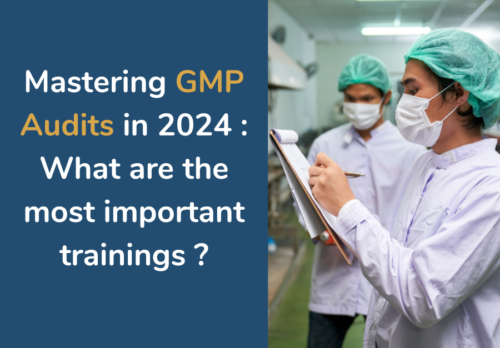A formal good laboratory practice training involves introducing you to the various core principles of GLP, its history of revisions, the globalization of GLP, and how various agencies across the world have adapted it.
Safety and quality are paramount when conducting any laboratory operation. But how do you ensure the myriad of actions you take, from the type of equipment you choose to the exact steps involved in your experiments? You introduce standards. Standards and guidelines help you establish the best practices and quality parameters that can help you assess your laboratory practices.
Good laboratory practice, GLP, is a universally used quality system that guides how laboratory processes and studies must be conducted, planned, recorded, reported, and archived. GLP is the equivalent of GMP, good manufacturing practice, in laboratory environments. While the scope of GMP spans the entire manufacturing process, the scope of GLP is limited to the lab phase, such as the safety testing phase. Nevertheless, it is just as important that any person involved in these activities must be well aware of the GLP standards and trained in the proper quality control mechanisms.
History of GLP
The very first concept of GLP evolved alongside GMP in the 1970s in the USA as a means to address the concerns regarding the safety of preclinical safety data. GLP emerged as the best way for the FDA to validate such data as other types of inspections proved inadequate. The FDA published a formal GLP ratification in 1976, and its final rule came into effect in June 1979 as part of the FDA 21 CFR part 58.
The regulations were further improved with further additions to the GLP regulations made in 1983 under two separate parts, 40 FCR 160 and 40 CFR 792.
Why Do You Need Good Laboratory Practice Training?
Several government approval agencies and legal bodies, such as the FDA, mandate GLP compliance for clinical studies. Here are some types of clinical studies with strong requirements for GLP compliance:
- Any study involving health products with intended use on animals.
- Safety studies conducted to evaluate the potential drug abuse implications of a product or test must follow GLP standards. FDA requires GLP-compliant reporting on these types of studies.
- Any chemical procedure used to demonstrate a test article, evaluate its stability, and determine the dosage, concentration, and homogeneity of test article mixtures must be GLP compliant.
As you can see, much of the clinical testing process conducted for drug safety and test articles evaluation must be GLP-compliant by law. This means understanding the components of GLP and training in the various quality parameters set by GLP is essential for any person dealing with the same.
What Will You Learn in Good Laboratory Practice Training
A formal GLP training involves introducing you to the various core principles of GLP, its history of revisions, the globalization of GLP, and how various agencies across the world have adapted it.
Here are some of the common areas where training in GLP will come into play:
Role of GLP in the drug development process
Developing a drug can be a long, resource-intensive, and time-consuming process. It can be divided into several distinct phases such as:
- Discovery that involves drug research
- Testing for the pharmacological effect that involves
- Non-clinical
- Clinical
- Post-approval
GLP postulates all the procedures, reporting formats, approvals, data access mechanisms, data handling, and so on when dealing with all these distinct stages involved in the drug development process.
Resources and GLP training
All laboratory testing includes a fixed set of resources, be it raw materials, personnel, equipment, licenses, etc. GLP makes it a fundamental point to provide the exact explanations and definitions for these resources. This includes detailed descriptions and rules on the following:
- Organization and personnel
Ensures a strict organizational structure, responsibilities, and organizational chart. GLP also provides guidelines on the necessary number of personnel required, instructions on the clarity of their job descriptions, and the importance of the e-qualification and training required to maintain operational excellence at all times.
It emphasizes the need for a study director to ensure GLP compliance for all activities taken during the study.
- Facilities and equipment
GLP stresses the importance of adequate facilities and equipment and gives the necessary guidelines on the testing facility size, location, and overall environmental factors. Failing to comply with these mandates could affect the credibility of the study.
GLP also proposes using a strict validation, qualification, calibration, and maintenance program to ensure that all equipment is in good shape and of adequate quality.
GLP rules
An important part of training under GLP is to understand the rules and policies that form part of any specific study. These rules constitute the following aspects of the study:
- The basic principles, decisions, and policies
- The communication channels and information passed to the staff and stakeholders to maintain high performance of all study operations.
- Perform retrospections to identify any shortcomings and improve the processes.
- Document every part of the study and ensure accountability.
The study director is responsible for creating and maintaining the rules composed of the protocols and written procedures under which the scientific study is undertaken.
GLP Training for Characterization
To validate a study, one must adequately identify characteristics such as identity, purity, composition, stability, and impurity profile of the test item in consideration. GLP training can help you understand these properties and ensure that only people with the right knowledge and expertise participate in the study.
The GLP also mandates a quality assurance system to minimize any quality issues within the study further.
GLP provides a documentation system to keep track of the complete trail of all the test items used and helps with efficient monitoring. Understanding this documentation process is thus very important to stay compliant and get the necessary validation required for the test items.
Further, GLP makes you understand and know the necessary steps to take when selecting and dealing with the test system. Training with GLP ensures that you work within adequate conditions that satisfy scientific, ethical, and legal mandates.
Quality Training with GLP
Quality assurance guidelines from GLP help you assess, audit, and perform better reviews on your studies. It helps you make sure you have the necessary documentation to share your findings with all stakeholders, be it top management or an approving agency
Understand clinical study procedures better with GLP training
GLP training is not only necessary but is an essential part of understanding the clinical study processes, so you stay compliant and do not waste the expensive resources that go into making a scientific study. Hence, GLP helps validate your study and also helps you find the optimal ways to conduct it efficiently. Take our comprehensive course on in-depth insights into conducting efficient and compliant scientific studies. This online GLP training has been developed by Eliot Zate, a recognized expert in the application of Good Laboratory Practice, and has conducted assessments of compliance with the Principles for many organizations worldwide. This 2-hour training course provides you with a certificate of completion and CEU/CPD accreditation.





